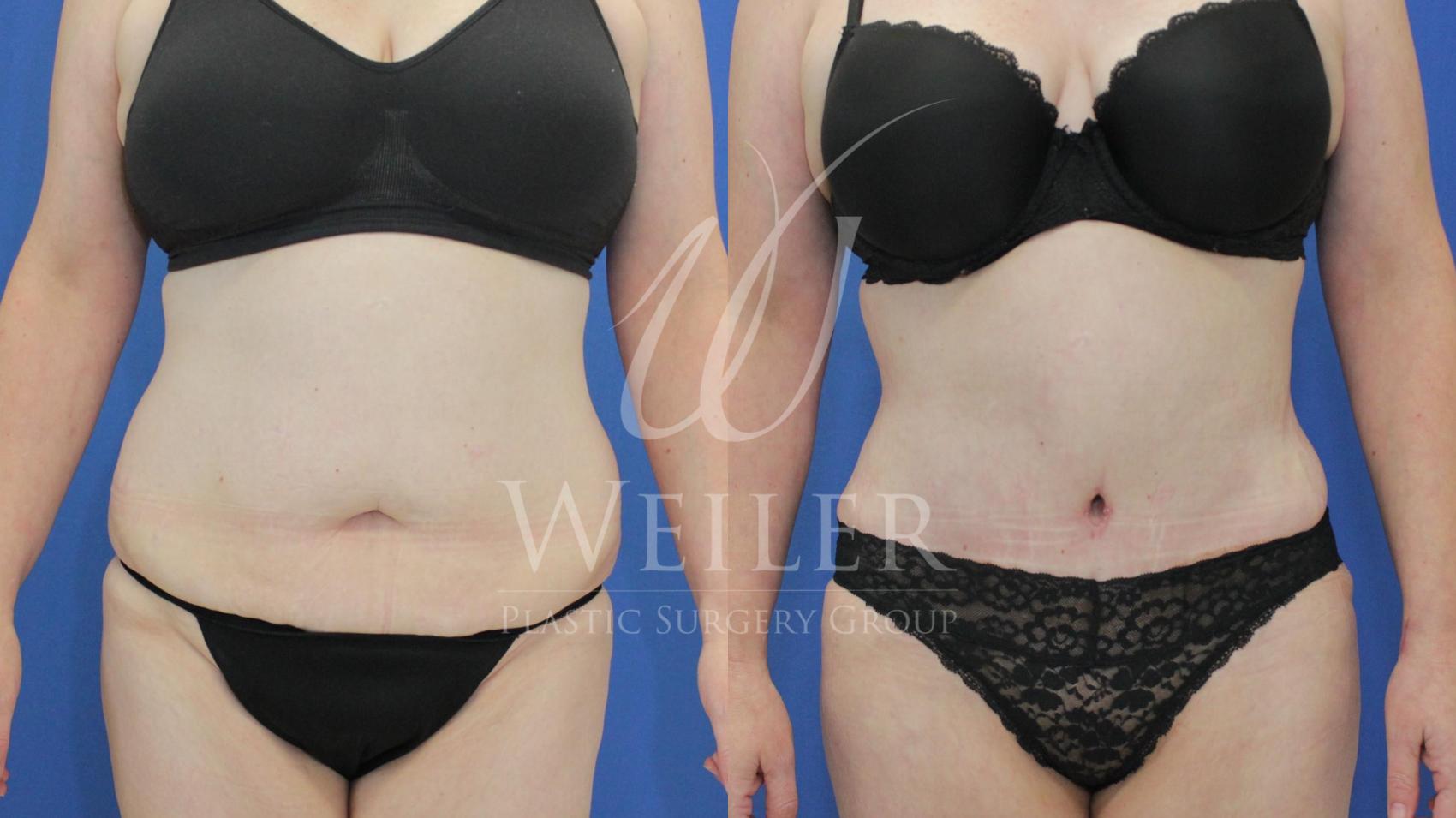A tummy tuck, or abdominoplasty, helps you achieve a flatter and more toned abdomen, but it’s important to be realistic about the scarring that comes with it. How can you manage your tummy tuck scar? Keep reading for scar care information and tips.
Understanding Tummy Tuck Scars
Scarring is inevitable with any surgical procedure, and tummy tucks are no exception. The extent and visibility of the scars, however, depend on several factors, including the type of tummy tuck performed, your skin type and genetics, and how well you follow postoperative care instructions.
Types of Tummy Tuck Scars
- Full Tummy Tuck: This involves a horizontal incision from hip to hip, just above the pubic area, as well as a scar in or around the navel.
- Mini Tummy Tuck: This requires a shorter incision, typically confined to the lower abdomen, and is usually 3 to 8 inches wide.
- Extended Tummy Tuck: This includes a longer incision that extends around the flanks to address excess skin and fat on the sides as well.
Ways To Look After Your Tummy Tuck Scars
Although your scars will naturally flatten and fade, proper aftercare can significantly impact their final appearance. Here are some tips to help your scars heal well:
- Follow Your Surgeon’s Instructions: Adhere to your plastic surgeon’s postoperative care instructions, including wound care and activity restrictions.
- Keep the Area Clean: Clean the incision area as directed to prevent infection, which can worsen scarring.
- Avoid Sun Exposure: Protect the scar from sun exposure, as UV rays can darken the scar and make it more noticeable.
- Stay Hydrated and Eat Healthily: Proper nutrition and hydration play an important role in supporting healing.
- Use Silicone Sheets or Gels: Silicone-based products help flatten and soften scars over time.
- Stop Smoking: Smoking impairs healing and negatively impacts scar appearance.
Scar Treatment Options
Most scar reduction options focus on minimizing or camouflaging scarring. While you won’t be able to completely remove the scar without scar revision or removal surgery (which would, in turn, leave its own scar), the following strategies may help:
- Topical Treatments: Silicone and physician-grade skincare products can aid healing and scar refinement.
- Massage Therapy: When patients ask us how to break up scar tissue after a tummy tuck, we generally recommend gentle self-massage to improve blood flow, soften the scar, and improve mobility.
- Laser Treatments: Laser skin resurfacing may reduce redness and improve the scar’s texture.
- Microneedling: This technique stimulates collagen production, improving the appearance of scars.
- Steroid Injections: These injections break down collagen fibers and reduce redness and inflammation for an improved scar appearance, especially for keloid scars.
- Camouflage Makeup: While your plastic surgeon will conceal your scar so it’s not visible when wearing underwear or a bikini bottom, you can use specialized makeup to cover scars temporarily.
- Tattoo: If you want a more permanent solution, you can get a tattoo over the scar, opting for a skin-colored pigment or a more colorful, decorative approach.
When Can I Tattoo Over My Tummy Tuck Scar?
We recommend waiting at least 1 year before tattooing over your tummy tuck scar. This allows sufficient time for your scar to stabilize. Once your tummy tuck scar matures, you may even find that you don’t need the tattoo.
If you do pursue tattooing, we recommend consulting with your plastic surgeon and a professional tattoo artist to ensure the area has healed fully and is suitable for tattooing.
Tummy Tuck Scars Over Time
Scars go through several stages of healing and maturation. Here’s what you can expect at different intervals post-surgery:
6 Months
Your tummy tuck scar after 6 months is likely to appear red or pink and may feel firm to the touch. The scar is noticeable, but it will continue to fade and soften with diligent care.
1 Year
After one year, your scar will typically be flatter and lighter in color. It may still be visible but will have improved significantly compared to the initial postoperative period. You should continue using scar treatments and incorporate massage to reduce your scar’s appearance further.
5 Years
Tummy tuck scars after 5 years should be fully matured. They will be much lighter and less noticeable, often just a thin, white line that blends with the surrounding skin. While the scars will never completely disappear, they will be significantly less prominent.
For more information on what to expect before and after a tummy tuck, please read our related blog post.
Take the Next Step
While scars are a natural outcome of surgery, proper aftercare, patience, and professional treatments can significantly reduce their appearance. To learn more about your tummy tuck options and how Weiler Plastic Surgery Group’s experienced plastic surgeons strive to minimize visible scarring, please request a consultation or call us at (225) 399-0001.




Leave a Reply